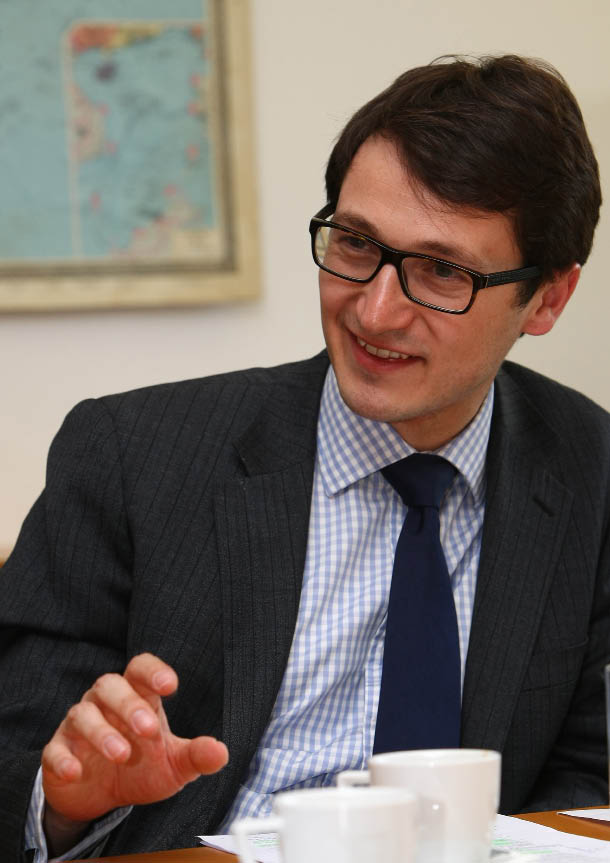Build a Capital Economic Circle for Coordinated Development
On February 26 of 2014, President Xi Jinping directed after listening to work reports on Beijing-Tianjin-Hebei coordinated development that efforts be made to expand environmental capacity and ecological space and enhance environmental protection. On the basis of establishing cooperation mechanisms for preventing air pollution, cooperation mechanisms in other areas such as afforestation, water protection, water treatment and the utilization of clean energy should also be improved.
The three localities have taken concrete actions to improve the environment through joint efforts. In September of 2013, four ministries released a detailed implementation plan for air pollution prevention and control in the Beijing-Tianjin-Hebei region, as a guideline for implementing the Airborne Pollution Prevention and Control Action Plan (2013-2017). Besides launching the cooperation mechanism for air pollution prevention and control it is estimated that other cooperation mechanisms in water resources protection, water environment treatment and the utilization of clean energy will be improved in the Beijing-Tianjin-Hebei region.
Wu Bin, director of the ecological research center under the State Forestry Administration, believes that the coordinated regional development requires priority on planning ecological space. He pointed out that ecological civilization should be policymakers’ first concern in advancing urban growth, and correspondingly, economic development and lifestyles should keep ecological interests in mind. During the process of integration, policy-making should be scientific and take account of expert suggestions and opinions. Environmental abuses should be avoided by careful planning with respect to natural spaces, land utilization and water use.
Complementary Economic Structure
The Beijing Zoo Wholesale Market, established in the mid-1980s, is the largest clothes wholesale market in northern China. The market has the reputation as a “shopping paradise.” Many film stars, including famous actress Fan Bingbing, have shopped here. On April 3 of 2014, the government of Hebei’s Langfang City signed an agreement with the government of Beijing’s Xicheng District to move the market to Langfang.
Beijing currently has over 120 wholesale markets in the city center and the total number is more than 1,300 in Beijing at large. They draw large numbers of people, causing major traffic jams. Therefore, decentralization is demanded. Transferring some markets to neighboring regions both alleviates Beijing’s problem and makes neighboring economies more robust. If some of the industries are directed to Hebei, the province’s current economic structure is expected to alter.
Beijing, Tianjin and Hebei represent a total population exceeding 100 million and a total area of 216,000 square kilometers. With scale equal to the Pearl River Delta and Yangtze River Delta, the capital economic circle ranks among the biggest regional economic blocs in China. In order to promote coordinated regional development, President Xi Jinping said integrated regional development should be based on the comparative advantages and modern industrial divisions of each region, as well as the principle of complementary regional advantages and mutually beneficial cooperation. Also, integrated development should be accelerated in width and depth by building city clusters in the Beijing-centered region. Their focus should be on optimizing regional industrial divisions and distributions, making an overall plan for resources and building a long-term and effective system and mechanism.
For many years, Beijing, Tianjin and Hebei have had a division of labor in industry. Hebei is dominated by secondary industries, such as iron and steel, coal, electric power and light industry. Beijing, as the center of politics, science and technology innovation, human resources and international exchange, is a center for high-end service, technology and culture industries. Tianjin boasts a strong foundation for commerce and manufacture; therefore its advantage lies in advanced manufacture, sci-tech research, development and application.
Yang Weimin, vice head of the Central Leading Group on Finance and Economic Affairs, said that Beijing is overloaded with functions, many of which should not be shouldered by the national capital. Administrators must change the convention of developing all functions by transferring part to neighboring cities. This will bring coordinated and complementary development among cities in the Beijing-Tianjin-Hebei area.
In order to rationally divide work and complement each other’s advantages and enhance overall competitiveness in the region, the three localities have made clear their positions based on their characteristics. Beijing will build a knowledge and service-driven economy, such as finance, insurance, tourism, culture and other high-end service industries. Tianjin, with a population exceeding 10 million, will see the proportion of service industries in its total economy grow to surpass 50 percent. Hebei has undertaken many manufacturing production projects that have been transferred from Beijing and Tianjin.

